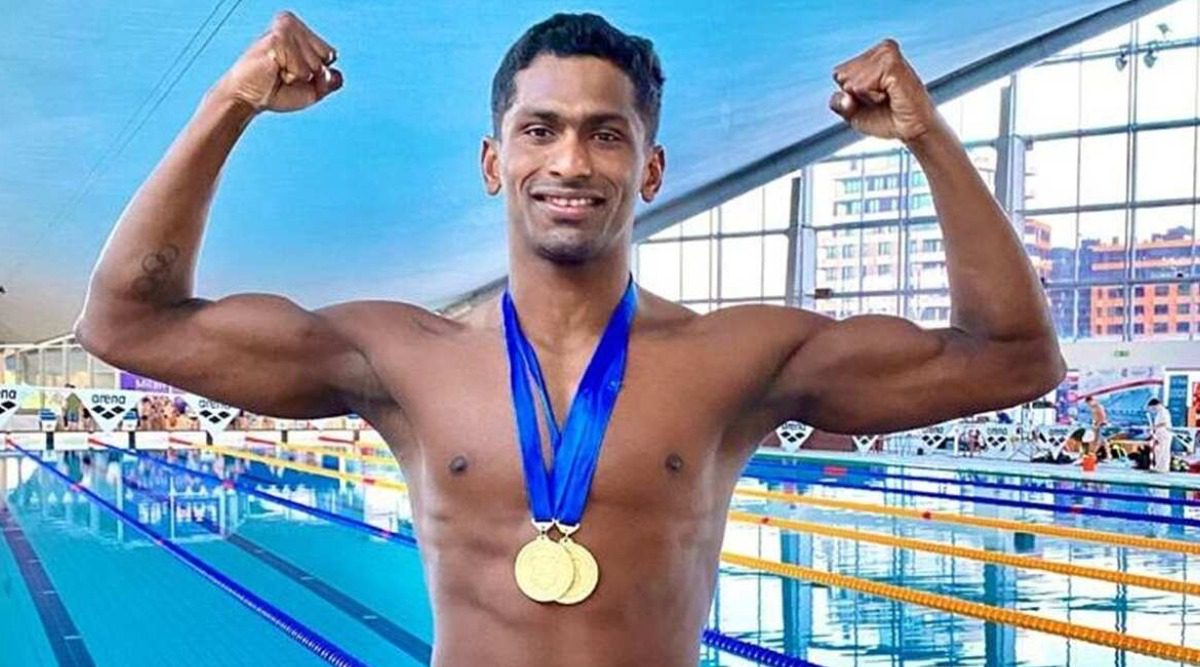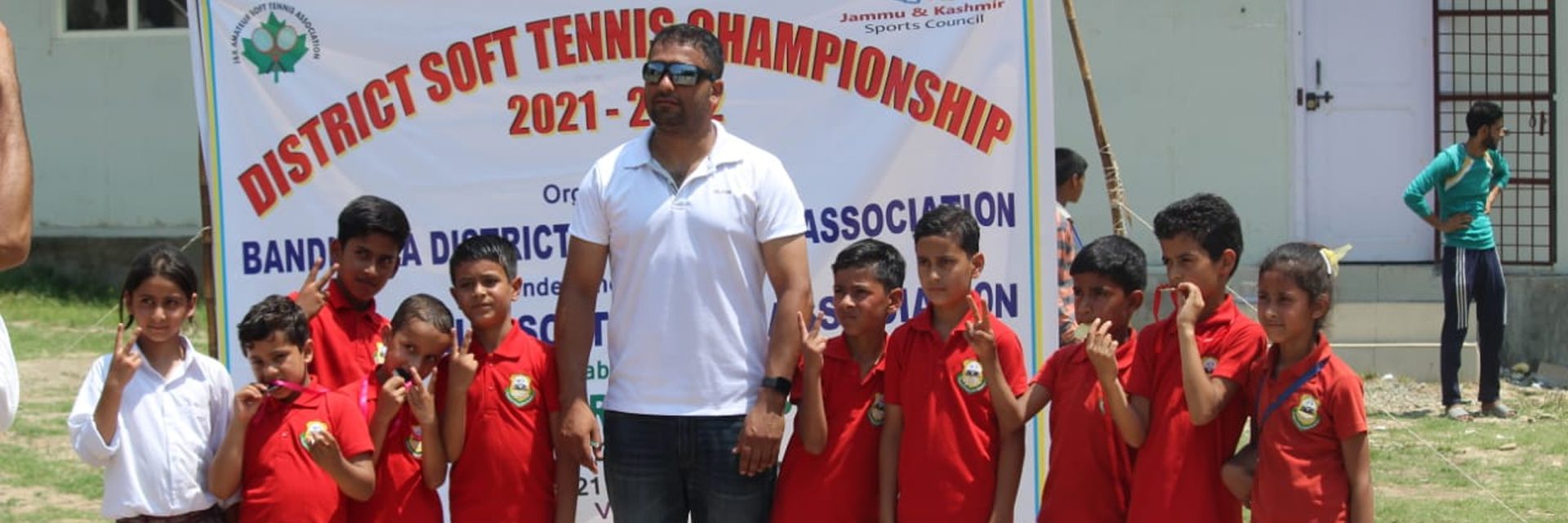(January 25, 2024) When M Tulasi Chaitanya arrived in Ireland to swim across the North Channel (Northern Island to Scotland) in July 2023, he was staring at a sea of challenges. The chilly waters, rough seas, strong currents and fickle weather were not the only elements he was up against. Poisonous jelly fish, sea lions and a variety of aquatic animals too posed a serious threat to his life.
Despite the odds, the iron-willed swimmer set a world record by becoming the first cop ever to swim a distance of 34.5 km in 13 hours – in what is one of the toughest open water stretches in the world. “Leave alone jelly fishes, during my English Channel swim, two sea snakes swam past me. I have encountered sharks as well,” smiles open water swimmer M Tulasi Chaitanya, in an exclusive with Global Indian.

M Tulasi Chaitanya
Over the years, the 34-year-old, who works as a Police Head Constable in Special Branch, Vijaywada in Andhra Pradesh, has stunned the world with his mind-boggling expeditions across the globe.
Recently, he received the prestigious Tenzing Norgay National Adventure Award 2022 and a cash prize of ₹15 lakh from President of India Droupadi Murmu.
North Channel
A total of 1084 swimmers from all over the world have attempted to cross the North Channel, but only 124 have been successful so far. Chaitanya is one among them. “One of the main challenges when swimming in such chilly waters is hypothermia. Water temperature at the channel was only around 12 degrees Celsius,” informs the ace swimmer, who is the fourth Indian to accomplish the feat.
He started at 5:30 am on August 9 and achieved his target by around 6:30 pm. “To protect my skin, I applied ocean grease (petroleum jelly) before entering the water. Mid-way through, my body started to freeze but I tried to distract my mind by thinking of all the food I love to eat, and continued swimming,” informs the determined swimmer, who remained positive throughout the expedition despite getting caught in strong undercurrents and high waves.
He completed more than half of his expedition in the first five hours. Thereafter, the changing wind speeds and falling temperatures proved to be a huge challenge. “It was a proud and satisfying feeling as it put my endurance to test,” says Chaitanya, who encountered many jellyfish alongside but managed to keep himself away from them. Jellyfish produces an itching and burning sensation, which can affect the lungs and also result in instant death.
Swimming across the world
Chaitanya previously swam across the Catalina Channel, Strait of Gibraltar, English Channel and North Channel was the fourth, all of which was a rare accomplishment for a policeman. It was a part of the Ocean Seven series.

M Tulasi Chaitanya in one of his swimming sprees
He completed the 20 Bridges Circumnavigation Swim (45.9 km) around Manhattan Island in New York City in 7 hours 45 minutes; the 26.4-km Sri Chinmoy Marathon Swim Rapperswil-Zurich in Lake Zürich, Switzerland and swam 12 km across Lake Bodensee, swimming from Friedrichshafen in Germany to Romanshorn.
Chaitanya is now prepping up for completing the remaining three oceans in the series by swimming across the Cook Strait in New Zealand, Molokai Channel Hawaii and The Tsugaru Strait in Japan.
Palk Strait
In 2018, Chaitanya created a new world record after swimming across the Palk Strait (Talaimannar in Sri Lanka to Dhanushkodi in India) in the shortest time. He covered a distance of 39 km in 8 hours and 25 minutes.
“Here too, I was swimming against strong winds and it was a rough sea. I saw several sharks and jellyfish all along,” recalls the police man, who got stung by a jellyfish during a practice swim in the same waters, which made him vomit non-stop for two days. For the final swim though, he applied grease on his body to make it slippery and ensure that jellyfish do not get a hold of him.
For this feat, the ace swimmer started training almost an year ago. Otherwise, he was training under Olympic coach Pradeep Kumar in Bengaluru for almost six years.
He recalls how local fishermen helped him navigate. “A few of them even swam alongside and helped me find the best possible route,” he says adding that by the time he reached the Indian shores, he was both exhausted and relieved. This success paved the way for his future expeditions.

M Tulasi Chaitanya
Andhra Boy
Born in Vijayawada to a homemaker mother and police officer father, Chaitanya, who studied in Amali School, started swimming at the age of nine. He later went to Dr Lankapalli Bullayya junior college.
At a young age, he was inspired by an official who used to reside in the police quarters. He was a swimmer and had won many medals. “I was fascinated with his medals, so many of them. I would just sit in the house and stare at the medals for hours,” recalls Chaitanya, who won his first national medal while in college.
In 2013, he swam the 25-km stretch from Bheemunipatnam to RK Beach and a 3.2 km stretch off Hermosa Beach in an open-water event in 2017. Moreover, he has bagged several medals at international tournaments including a gold in 4×50-m freestyle relay at the World Police Games held in Belfast earlier.
His inspiration
Once he was enrolled into the police department in 2012, Chaitanya’s swimming career got a major boost. Senior IPS officer Rajiv Trivedi, who was then posted as Additional DGP, Sports (in united Andhra Pradesh) saw the potential in Chaitanya. An accomplished swimmer himself, Rajiv Trivedi arranged funding and started advanced swimming training for Chaitanya at Hyderabad and in Bengaluru and has continued to guide him since then.
“Rajiv Trivedi sir is my God. He helped and guided me at every step. Without him, I would not have reached where I am today,” says Chaitanya, who was adamant that unless Trivedi accompanied him to the Rashtrapati Bhavan (for the Tenzing Norgay National Adventure award), he wouldn’t accept the award.

M Tulasi Chaitanya receiving award from Droupadi Murmu, the President of India
He also credits Dimple Krishna, an NRI based in the US, who not only funded some of his expeditions, but also stood by him throughout his journey. “She has been a great support.”
Training
His day begins at 5 am, where he goes for a run followed up by warm up exercises before getting into the swimming pool, where he swims for almost three hours. “I train in the evening as well, with permission from my superiors. The intensity of training only increases before a major event.”
Usually before a major event, Chaitanya runs anywhere between 5 to 10 kms and swim 10 to 15 kms twice a day or even more. “I include protein supplements and also take energy drinks. I also go for regular physiotherapy and massage sessions,” says Chaitanya, who consumes more carbs for endurance.
Giving Back
Chaitanya is doing his bit to produce more swimmers like him. “I want to teach swimming to more kids, who can become great swimmers and make the state and nation proud. For this purpose, I along with a few friends are opening a swimming pool,” informs Chaitanya, who also coached six young swimmers who crossed the 29 km Palk Strait in April 2022.

M Tulasi Chaitanya with other swimmers
- Two gold and three silver medals in the All India Police Aquatic Meet, Guwahati, 2013
- Three gold and 3 silver medals in World Police & Fire Games, Belfast, 2013
- Five gold medals in All India Police Aquatic Meet, Jaipur, 2014. Best Indian Police Swimmer Award
- One gold, 3 silver, 1 bronze medal in All India Police Aquatic Meet, Delhi, 2015
- Five gold medals in All India Police Aquatic Meet, Lucknow, 2016. Best Indian Police Swimmer Award
- Three gold, 2 silver, 2 bronze medals in World Police & Fire Games, Los Angeles, 2017
- Three gold, 2 silver medals in All India Police Aquatic Meet, Delhi, 2018
- Palk Strait swim (Sri Lanka to India) 2018
- One silver medal in All India Police Aquatic Meet, Vishakhapatnam, 2019
- Catalina Channel Swim (Catalina to California) 2019
- One year NIS Diploma in Swimming Coaching, 2020
- Strait of Gibraltar Swim (Spain to Morocco), 2022
- Lake Konstanz Swim (Germany to Switzerland), 2022
- English Channel Swim (England to France), 2022
- Zurich Lake Swim, Switzerland, 2022
- Twenty Bridges Manhattan Swim, 2022
- Awarded Triple Crown Award in Open Water Swimming by World Open Water Swimming Association, 2022
- North Channel Swim (Ireland to Scotland), 2023
- Cook Strait Swim, New Zealand, 2023
- Follow M Tulasi Chaitanya on LinkedIn




